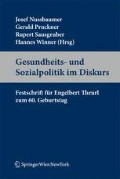Zusammenfassung
Gerüchten nach saß Arthur B. Laffer (damals Professor an der Universität Chicago) im Dezember 1974 bei einem Abendessen mit Donald Rumsfeld (Stabschef im Weissen Haus unter President Gerald Ford), Dick Cheney (Rumsfelds Stellvertreter) und Jude Wanniski (Mitherausgeber des Wall Street Journal). Bei dieser Gelegenheit hat er den Zielkonflikt zwischen dem Aufkommen einer Steuer und dem Steuersatz auf einer Serviette dargestellt (vgl. Laffer 2004). Dieser später als „Laffer-Kurve“ bekannt gewordene Zusammenhang vermittelt die grundlegende Einsicht, dass Individuen auf Veränderungen der Steuerbelastungen durch Verhaltensanpassungen reagieren. Im Extremfall sind diese Reaktionen so stark, dass eine Anhebung der Steuerbelastung zu keiner weiteren Erhöhung, ja sogar zu einem Sinken des Steueraufkommens führen kann. Dieses Argument bildet die Grundlage der angebotsorientierten Ökonomik, deren Einfluss auf wirtschafts- und steuerpolitische Reformdebatten aus heutiger Sicht nicht mehr wegzudenken ist.
Diese Arbeit wurde vom Fonds zur Förderung der wissenschaftlichen Forschung im Rahmen des Nationalen Forschungsnetzwerkes (NFN) „The Austrian Center for Labor Economics and the Analysis of theWelfare State“ gefördert.
Preview
Unable to display preview. Download preview PDF.
Literaturverzeichnis
Blundell R. und T. MaCurdy, 1999, Labor supply: A review of alternative approaches, in: Handbook of Labor Economics, Vol. 3a, O. Ashenfelter und D. Card, Hrsg. Amsterdam: Elsevier, 1559–1695.
Burtless G. und J.A. Hausman, 1978, The effect of taxation on labor supply: Evaluating the Gary Income Maintenance Experiment. Journal of Political Economy 86: 1103–1130.
Chetty, R., 2009, Is the taxable elasticity of income sufficient to calculate the deadweight loss? The implications of evasion and avoidance. American Economic Journal: Economic Policy 1: 31–52.
Dahlby B., 2008, The Marginal Cost of Public Funds. Cambridge: MIT Press.
Feldstein, M., 1995, The effect of marginal tax rates on taxable income: A panel study of the 1986 Tax Reform Act. Journal of Political Economy 103: 551.72.
Feldstein, M., 1999, Tax avoidance and the deadweight loss of the income tax. Review of Economics Studies 81: 674–680.
Giertz, S.H., 2007, The elasticity of taxable income over the 1980s and 1990s. National Tax Journal 60: 743–768.
Gruber J. und E. Saez, 2002, The elasticity of taxable income: Evidence and implications. Journal of Public Economics 84: 1–32.
Hall, R.E., 1973, Wages, income and hours of work in the U.S. labor force, in: Income Maintenance and Labor Supply: Econometric Studies. G.G. Cain und H.W. Watts, Hrsg. Chicago: Rand McNally, 102–162.
Heim B.T. und B.D. Meyer, 2003, Structural labor supply models when budget constraints are nonlinear.Working Paper. Northwestern University
Laffer, A.B., 2004, The Laffer curve. Past, present, and future. Backgrounder 1765, The Heritage Foundation, 1–16.
Lehner, G., 1999, Überblick über die Maßnahmen der Steuerreform 2000, WIFO-Monatsberichte 72: 515–522
Moffitt R., 1999, Introduction to special issue on taxation and labor supply in industrial countries. Journal of Human Resources 25: 313–316.
Saez, E., 2010, Do taxpayers bunch at kink points? American Economic Journal: Economic Policy 2: 180–212.
Saez, E., J.B. Slemrod und S.H. Giertz, 2009, The elasticity of taxable income with respect to marginal tax rates: A critical review. NBER Working Paper 15012. Cambridge, MA: National Bureau of Economic Research. Erscheint demnächst in Journal of Economic Literature.
Schratzenstaller, M. und A. Wagener, 2009, The Austrian income tax tariff, 1955–2006. Empirica 38: 309–330
Weber, C., 2010, Obtaining a consistent estimate of the elasticity of taxable income using difference-in-differences. Working Paper. University of Michigan.
Editor information
Editors and Affiliations
Rights and permissions
Copyright information
© 2011 Springer-Verlag/Wien
About this chapter
Cite this chapter
Sausgruber, R., Stöckl, M., Winner, H. (2011). Die Elastizität des steuerbaren Einkommens: Konzept und Evidenz aus Österreich. In: Nussbaumer, J., Pruckner, G., Sausgruber, R., Winner, H. (eds) Gesundheits- und Sozialpolitik im Diskurs. Springer, Vienna. https://doi.org/10.1007/978-3-7091-0554-2_11
Download citation
DOI: https://doi.org/10.1007/978-3-7091-0554-2_11
Publisher Name: Springer, Vienna
Print ISBN: 978-3-7091-0553-5
Online ISBN: 978-3-7091-0554-2

